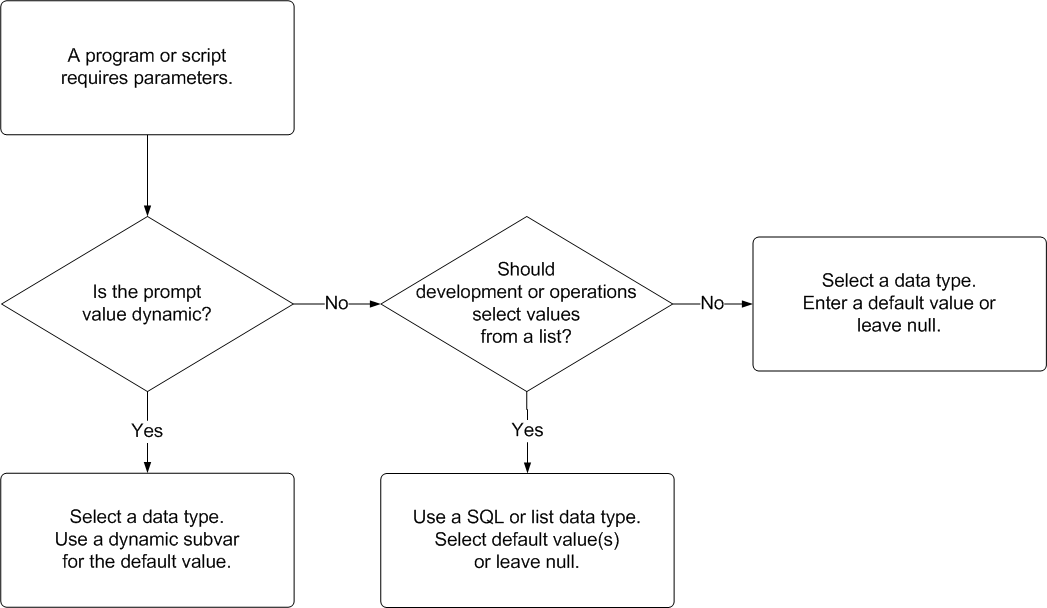
This procedural diagram can help you choose the type of prompt you should define.
The features described below will help you define the most efficient Applications Manager prompts.
To determine how you should define a prompt in Applications Manager, start by thinking about whether the prompt values are dynamic or static. Here are the definitions of those terms:
Dynamic prompt values: A dynamic prompt value is a value that is automatically set each time the task is run. It has the potential to be different each time the prompt is evaluated. Sample dynamic prompt values include the number of sales orders in a database, a timestamp, and the date of the last day of the month. To automatically set the value, Applications Manager uses a SQL statement to retrieve the value from a database.
Static prompt values: When prompt values do not change, except when updated manually or with a condition action, they are static. Sample static prompt values include company names, department names, and yes/no flags.
If you are new to Applications Manager, you're probably only used to providing static values for parameters. But you will find that dynamic values allow you to automate tasks that previously had to be run manually.

This procedural diagram can help you choose the type of prompt you should define.
Using Dynamic Prompt Values
In Applications Manager, you define dynamic prompt values with substitution variables (subvars) that include a SQL statement. The statement retrieves a value from a database. Subvars including a SQL statement are called dynamic subvars. Several dynamic subvars ship with Applications Manager. You can also create your own.
Dynamic subvars are a cornerstone of automation and should be used whenever possible. Advantages of dynamic subvars include the following:
Other options, such as whether a prompt value is editable when requested, are determined by the prompt's details.
Using Static Prompt Values
When a prompt value is static, you should think about the best way to set the value. If it would be advantageous for a developer creating the prompt, or the operator requesting a job, to select a parameter value from a list, you can create a prompt where users can select one or multiple prompt values from a list. Selecting values from lists eliminates data entry errors. Usually you build lists for prompts with a SQL statement that pulls values from a database table. Alternatively, you can build a list from the Applications Manager GUI, or specify a directory and allow users to select file names as values. The way the list is built is determined by the prompt's data type.
If the value will not be included in a list, you can do either of the following, depending on your preference:
Other options, such as whether a prompt value is required, editable, or has a default value are determined by the prompt's details.